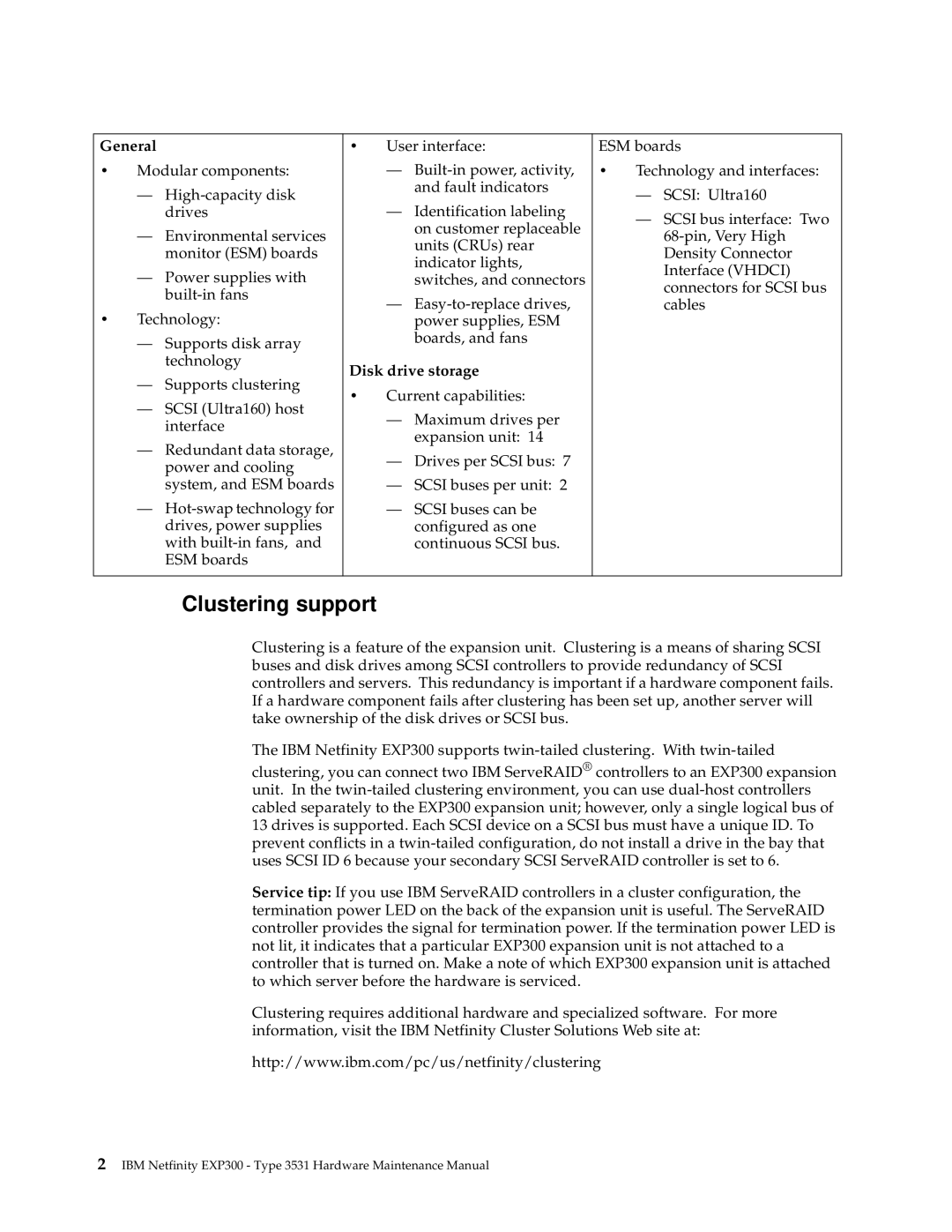General |
| • | User interface: | ESM boards | |||
• | Modular components: |
| — | • | Technology and interfaces: | ||
| — |
|
| and fault indicators |
| — SCSI: Ultra160 | |
|
| — | Identification labeling |
| |||
|
| drives |
|
| — SCSI bus interface: Two | ||
| — | Environmental services |
|
| on customer replaceable |
| |
|
|
|
| ||||
|
|
| units (CRUs) rear |
| |||
|
| monitor (ESM) boards |
|
|
| Density Connector | |
|
|
|
| indicator lights, |
| ||
| — | Power supplies with |
|
|
| Interface (VHDCI) | |
|
|
| switches, and connectors |
| |||
|
|
|
| connectors for SCSI bus | |||
|
|
| — |
| |||
|
|
|
| cables | |||
• | Technology: |
|
| ||||
|
| power supplies, ESM |
|
| |||
| — | Supports disk array |
|
| boards, and fans |
|
|
|
|
|
|
|
| ||
|
| technology | Disk drive storage |
|
| ||
| — | Supports clustering |
|
| |||
| • | Current capabilities: |
|
| |||
| — | SCSI (Ultra160) host |
|
| |||
|
| — | Maximum drives per |
|
| ||
|
| interface |
|
|
| ||
|
|
|
| expansion unit: 14 |
|
| |
| — | Redundant data storage, |
|
|
|
| |
|
| — Drives per SCSI bus: 7 |
|
| |||
|
| power and cooling |
|
|
| ||
|
|
|
|
|
|
| |
|
| system, and ESM boards |
| — | SCSI buses per unit: 2 |
|
|
| — |
| — SCSI buses can be |
|
| ||
|
| drives, power supplies |
|
| configured as one |
|
|
|
| with |
|
| continuous SCSI bus. |
|
|
|
| ESM boards |
|
|
|
|
|
|
|
|
|
|
|
|
|
Clustering support
Clustering is a feature of the expansion unit. Clustering is a means of sharing SCSI buses and disk drives among SCSI controllers to provide redundancy of SCSI controllers and servers. This redundancy is important if a hardware component fails. If a hardware component fails after clustering has been set up, another server will take ownership of the disk drives or SCSI bus.
The IBM Netfinity EXP300 supports
clustering, you can connect two IBM ServeRAID® controllers to an EXP300 expansion unit. In the
Service tip: If you use IBM ServeRAID controllers in a cluster configuration, the termination power LED on the back of the expansion unit is useful. The ServeRAID controller provides the signal for termination power. If the termination power LED is not lit, it indicates that a particular EXP300 expansion unit is not attached to a controller that is turned on. Make a note of which EXP300 expansion unit is attached to which server before the hardware is serviced.
Clustering requires additional hardware and specialized software. For more information, visit the IBM Netfinity Cluster Solutions Web site at:
http://www.ibm.com/pc/us/netfinity/clustering
2IBM Netfinity EXP300 - Type 3531 Hardware Maintenance Manual
